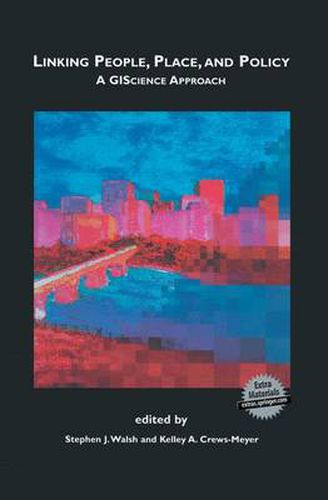Readings Newsletter
Become a Readings Member to make your shopping experience even easier.
Sign in or sign up for free!
You’re not far away from qualifying for FREE standard shipping within Australia
You’ve qualified for FREE standard shipping within Australia
The cart is loading…






This title is printed to order. This book may have been self-published. If so, we cannot guarantee the quality of the content. In the main most books will have gone through the editing process however some may not. We therefore suggest that you be aware of this before ordering this book. If in doubt check either the author or publisher’s details as we are unable to accept any returns unless they are faulty. Please contact us if you have any questions.
Linking People, Place, and Policy: A GIScience Approach describes a breadth of research associated with the study of human-environment interactions, with particular emphasis on land use and land cover dynamics. This book examines the social, biophysical, and geographical drivers of land use and land cover patterns and their dynamics, which are interpreted within a policy-relevant context. Concepts, tools, and techniques within Geographic Information Science serve as the unifying methodological framework in which landscapes in Thailand, Ecuador, Kenya, Cambodia, China, Brazil, Nepal, and the United States are examined through analyses conducted using quantitative, qualitative, and image-based techniques.
Linking People, Place, and Policy: A GIScience Approach addresses a need for a comprehensive and rigorous treatment of GIScience for research and study within the context of human-environment interactions. The human dimensions research community, land use and land cover change programs, and human and landscape ecology communities, among others, are collectively viewing the landscape within a spatially-explicit perspective, where people are viewed as agents of landscape change that shape and are shaped by the landscape, and where landscape form and function are assessed within a space-time context. This book articulates some of these challenges and opportunities.
$9.00 standard shipping within Australia
FREE standard shipping within Australia for orders over $100.00
Express & International shipping calculated at checkout
This title is printed to order. This book may have been self-published. If so, we cannot guarantee the quality of the content. In the main most books will have gone through the editing process however some may not. We therefore suggest that you be aware of this before ordering this book. If in doubt check either the author or publisher’s details as we are unable to accept any returns unless they are faulty. Please contact us if you have any questions.
Linking People, Place, and Policy: A GIScience Approach describes a breadth of research associated with the study of human-environment interactions, with particular emphasis on land use and land cover dynamics. This book examines the social, biophysical, and geographical drivers of land use and land cover patterns and their dynamics, which are interpreted within a policy-relevant context. Concepts, tools, and techniques within Geographic Information Science serve as the unifying methodological framework in which landscapes in Thailand, Ecuador, Kenya, Cambodia, China, Brazil, Nepal, and the United States are examined through analyses conducted using quantitative, qualitative, and image-based techniques.
Linking People, Place, and Policy: A GIScience Approach addresses a need for a comprehensive and rigorous treatment of GIScience for research and study within the context of human-environment interactions. The human dimensions research community, land use and land cover change programs, and human and landscape ecology communities, among others, are collectively viewing the landscape within a spatially-explicit perspective, where people are viewed as agents of landscape change that shape and are shaped by the landscape, and where landscape form and function are assessed within a space-time context. This book articulates some of these challenges and opportunities.